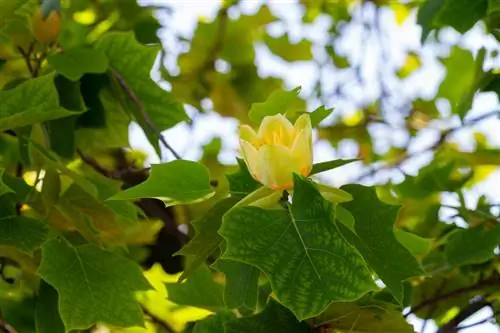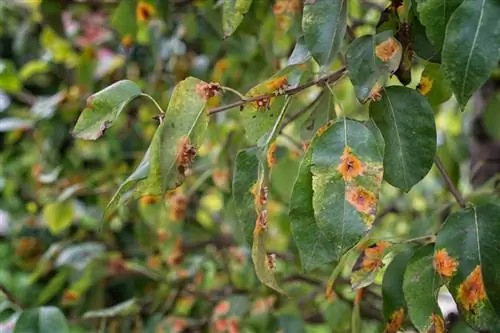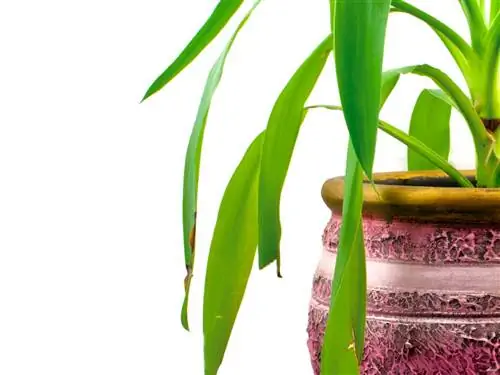- Author admin [email protected].
- Public 2023-12-16 16:46.
- Last modified 2025-01-23 11:22.
The tulip tree is one of the most magnificent trees in local parks and gardens. It is also considered particularly robust and durable. However, the beauty of this tree can also be affected by diseases such as fungal infection. You should act quickly.

How do I recognize and combat fungal infestation on the tulip tree?
When a tulip tree is infected with fungus, the leaves turn brownish, wither and fall off. Bark and branches can also be affected. To combat the infestation, remove affected parts of the plant, dispose of them with household waste and treat the tree with gentle home remedies.
How does a fungal infection manifest itself on the tulip tree?
If the tulip tree is weakened by a fungal attack,clear signs will become visible after some time. In the early stages the leaves change shape and color. You should monitor this procedure very closely, as an intervention is usually essential here. The affected leaves initially turn brownish and then wither. These then simply fall off. The bark and branches can also be attacked by fungi. Most fungal diseases spread extremely quickly and can ultimately affect the entire tree.
How can the tulip tree be freed from fungal infestation?
If a disease in the tulip tree can be clearly identified, thegeneral condition should first be checked. Pay attention to the number of leaves affected as well as the other parts of the plant. Thoroughly remove fallen leaves. However, do not throw this into the compost; instead, dispose of the plant remains in household waste. The soil should also be checked for any waterlogging. Excessive soil moisture can further promote the spread of fungal infestation. Instead of chemical agents, use gentle home remedies to combat fungal infestation.
Can the tulip tree be protected from fungal attack?
The tulip tree is a very uncomplicated tree species that is particularly difficult to weaken. Nevertheless, this plant isnot completely immune against fungal infestation. Therefore, take preventative measures to protect the tulip tree as much as possible. Therefore, ensure that it is in a bright location where the tree gets enough sunlight. The tulip tree should not be transplanted. In the worst case scenario, this could cause permanent damage. In addition, an environment protected from the wind is an advantage in order to create the ideal conditions for the tulip tree.
Is the tulip tree susceptible to diseases such as fungus?
The tulip tree is generally consideredextremely resistant to various forms of pest or fungal infestation. The right care and the optimal location are usually enough for the tulip tree to grow he althy and problem-free. This is particularly easy to care for and requires only a small amount of attention. Nevertheless, it should not be completely unobserved or even neglected. The first signs of illness should be recognized and treated as quickly as possible to enable the tulip tree to grow well.
Tip
Regular fertilization can also protect the tulip tree from fungal infestation
If you want to protect your tulip tree as much as possible from pest or fungal infestation, make sure to fertilize it regularly. However, no chemical fertilizers should be used. Instead, choose an ecological option. If you use this in spring, you will already be making a significant contribution to the he alth of your tulip tree.






